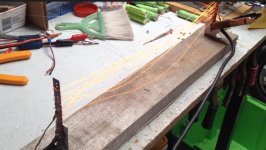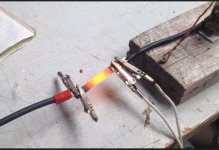msebold
10 W
I would love some advice on testing equipment. I am a novice. I am building an 82V 18650 battery pack that is made from 22 individual 8-cell, no-weld, parallel clusters I am constructing. The 18650 cells are NCR18650GA cells each putting out 10 amps. The 22 clusters will then be hooked up in series.
I seek to put a 60-amp test load on each 3.7 volt cluster to make sure it is working properly. Is there a reasonably priced piece of equipment on the market that would allow me to place such a test load on these 3.7 volt clusters?
Thanks in advance.
I seek to put a 60-amp test load on each 3.7 volt cluster to make sure it is working properly. Is there a reasonably priced piece of equipment on the market that would allow me to place such a test load on these 3.7 volt clusters?
Thanks in advance.



